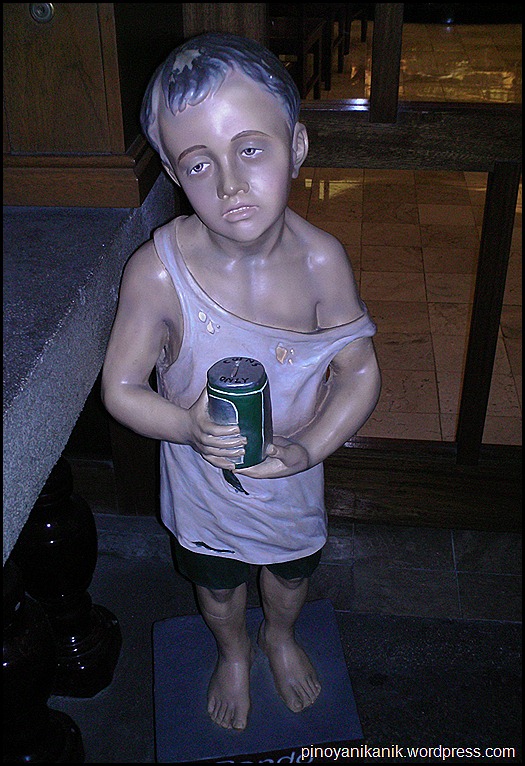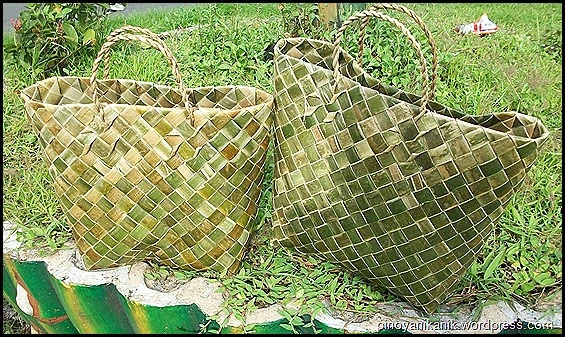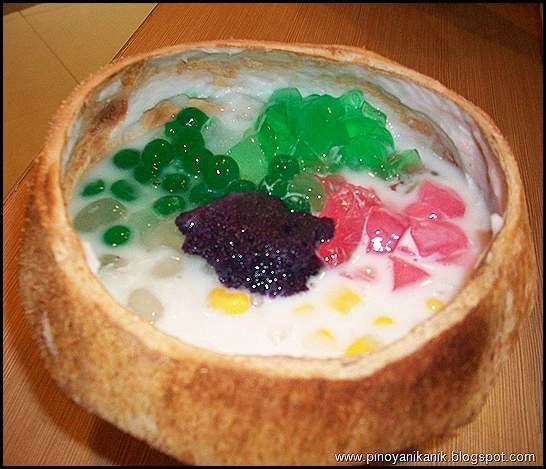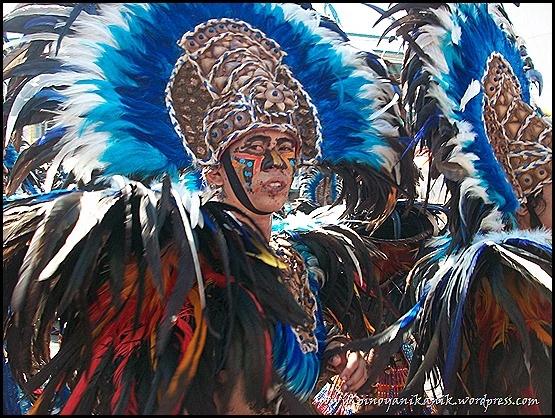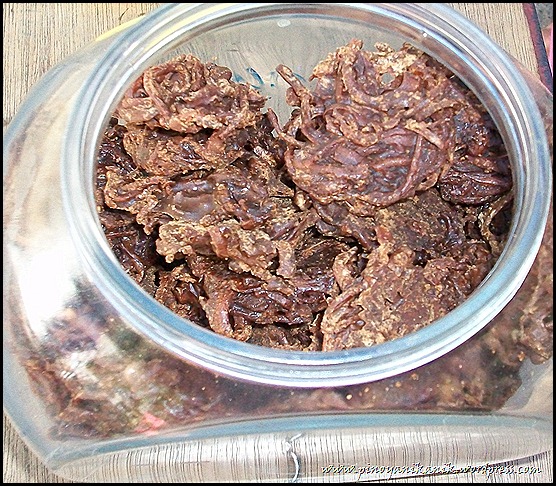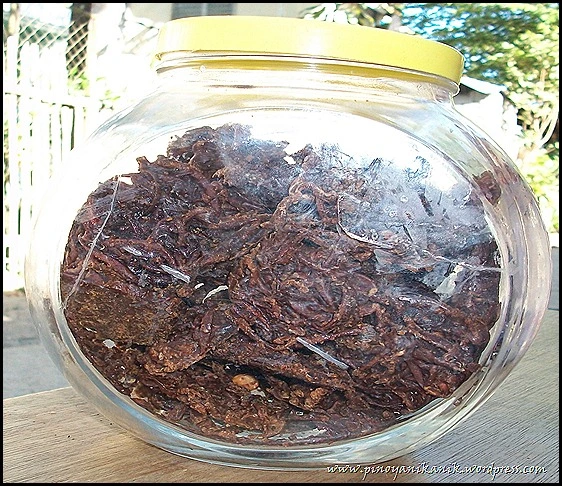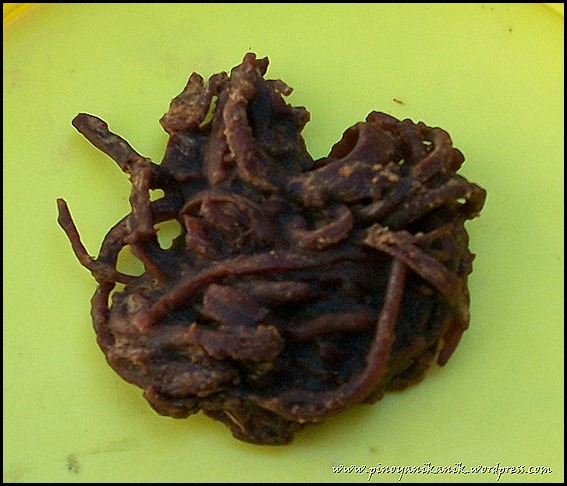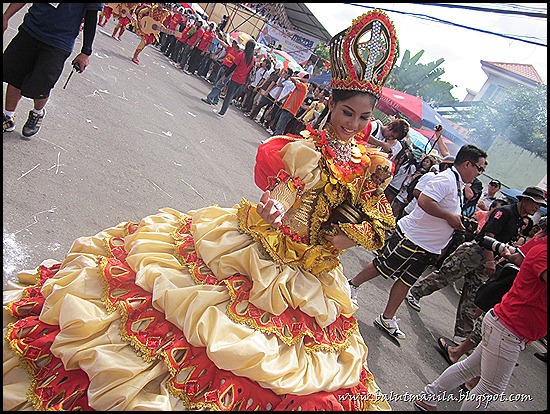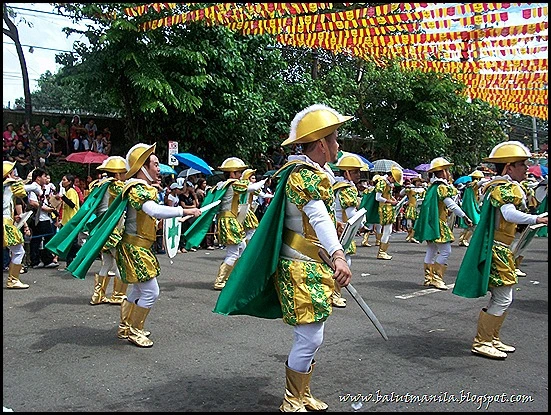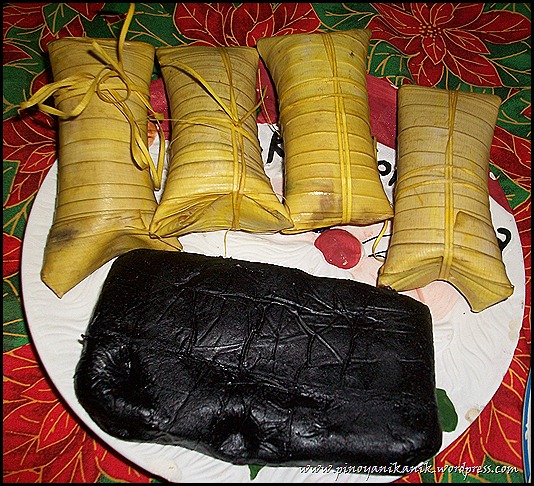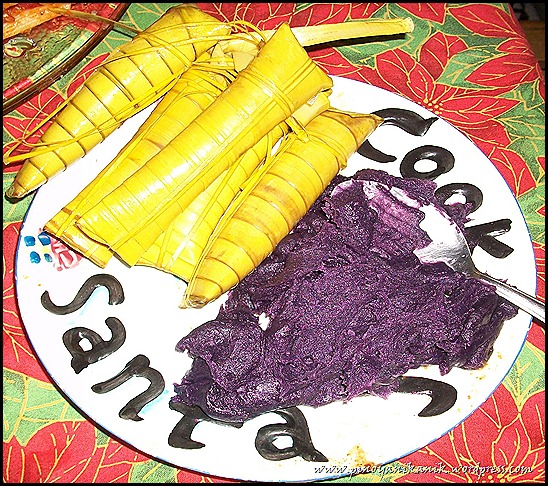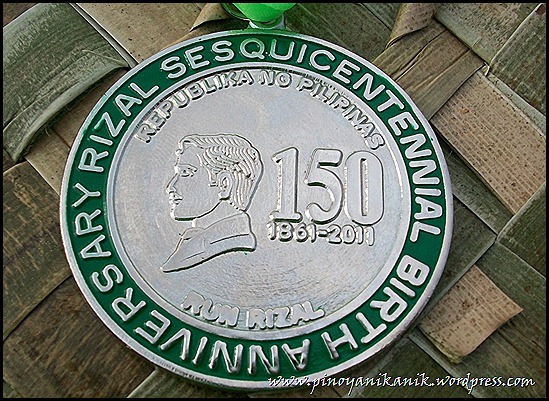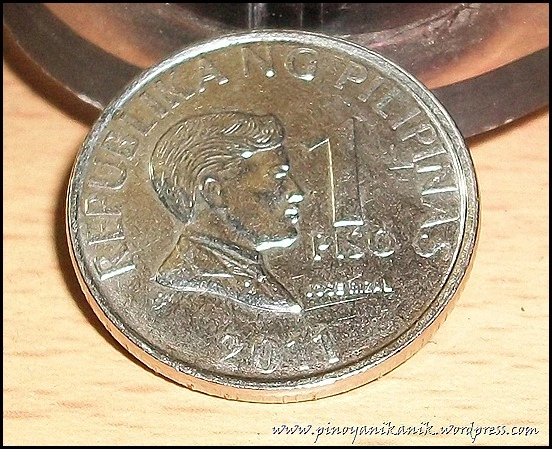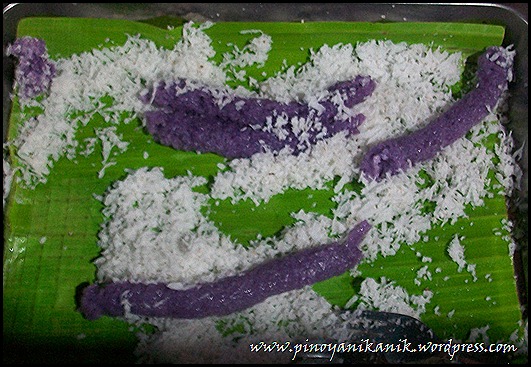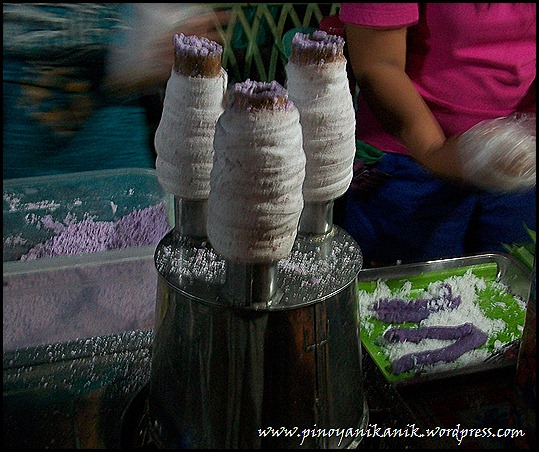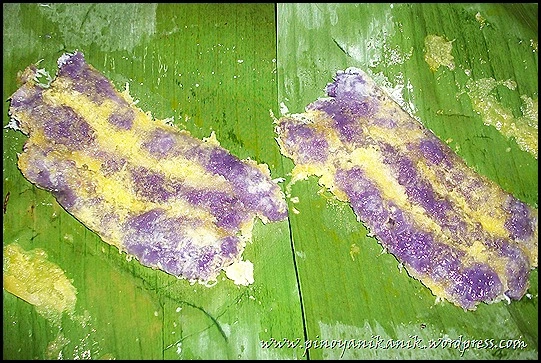Paumanhin (Apology)
I can’t find a photo that will aptly express my apology for abandoning this blog for quite a while so I created the one posted above. It has been two months since my last post.
The truth is I almost discontinue this blog. I’ve been very vocal that the reason is because I am not quite familiar blogging through WordPress compared to my ease in using Blogger. So what I did is to ask the opinion of my fellow blogger friends and I was surprise with the feedbacks I got from them. They are all positive and they all encouraged me to continue. They said that this blog is quite unique and that I will eventually be learning the tricks as I go along.
Well here’s a confession. Maybe even if someone encouraged me to discontinue this blog, I don’t think I would discontinue. I’ve been trying to but I can’t (lol). I simply love this blog. I love the idea behind why I created this and I still do. I love its purpose. When I need to fill-up blog information what my blog is about and what is its purpose, I am always proud writing my answer.
This is my way of showing my love and support to my race and my fatherland. It maybe simple but I’m proud of it! ![]() As for my nose bleeding with you WordPress, well, it’s actually part of the challenge and I’m not known for giving up so I’m here to stay
As for my nose bleeding with you WordPress, well, it’s actually part of the challenge and I’m not known for giving up so I’m here to stay ![]() .
.
For new readers here’s what this blog is about. Hope you continue hanging with me and this blog. More “anik-anik” coming along!
Pondo ng Pinoy
This photo is taken at Arzobispado de Manila – the home of the Archbishop of Manila located at Calle Arzobispo, Intramuros, Manila. The subject of the photo is the statue representing the “Pondo ng Pinoy” program.
“Anumang magaling kahit maliit, basta’t malimit ay patungong langit”
by: the Archbishop of Manila, Most Rev. Gaudencio B. Rosales
Small ordinary acts, not necessarily extraordinary feats – or a few centavos, not necessarily huge amounts of money – can accomplish great things if done or given by many, frequently and consistently, and pooled together for a common vision. This, essentially, is the idea behind the concept of Pondo ng Pinoy.
Read more about Pondo ng Pinoy here.
Bayong
Bayong is a “a coarse sack of woven strips of pandanus or palm leaves used especially. in the Philippines”. The traditional bayong is woven from “buri” leaves in the Visayas and “pandan” in Luzon.
Bayong is being used as a shopping bag back in the old days before plastic bags and the so called eco-bags took over the scene. Today there are very few users of bayong for shopping purposes. If there are some, they are are mostly old people who are going to the wet market. Good thing that environmentalists and the bayong makers are campaigning for people to use the traditional bayong.
The photo of bayong above is a sample of the traditional (simplest) kind of Bayong. I got this from a from a running event with a Spanish era concept. They used bayong as a loot bag instead of the ordinary common bags. It is totally something different from the loot bags from the other running events which usually are made from common bag materials.
Bayong makers are now injecting some modern design twist in the Bayong look like these ones in the photos below. These kind of Bayongs are mostly being exported, used as a fashionable accent or displays in exhibits. 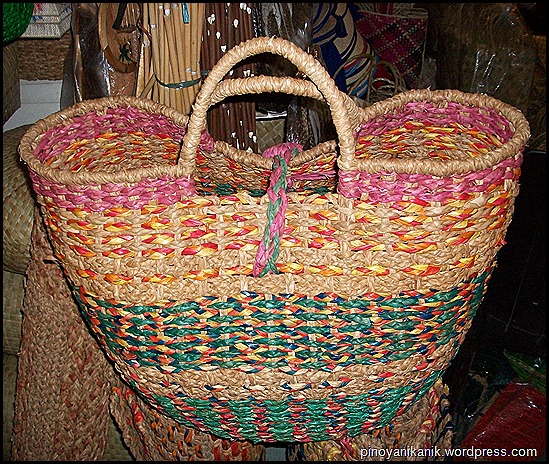
Buko Halo-Halo
Buko Halo-Halo with all the awesome goodness-gracious bunch of sweets!
Buko Halo-halo with ice cream toppings.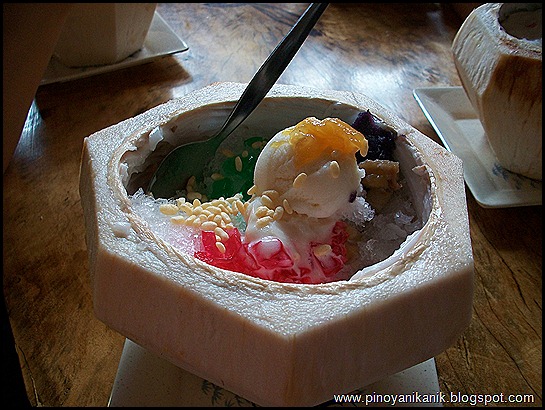
A pile of buko from a food court stall that specialized in making the Buko Halo-Halo 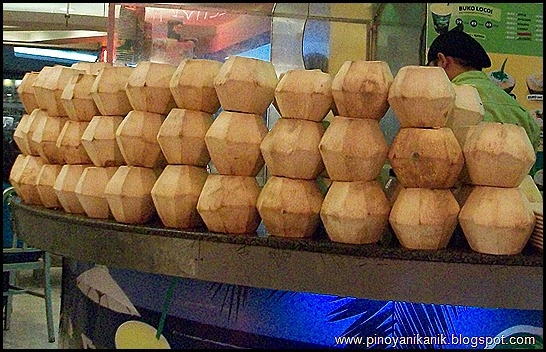
Buko is a young coconut fruit that is very popular as an instant refreshing food/drinks. It can be easily bought from a roving cart vendors to food/drink stalls or expensive restaurants.
Halo-Halo (from the word “halo” which means “mix” in English) is a popular and a favorite Filipino dessert or snacks that is a mixture of shaved ice and evaporated milk to which are added various boiled sweet beans, sweet potato, kaong, gelatin, sago, etc and fruits (banana, langka, etc) and served in a tall glass or bowl topped with any of ube jam, leche flan or ice cream.
Buko Halo-Halo is a halo-halo mixture served in coconut shell together with the young coconut meat. It is usually served showing the colorful contents on the top. It is quite popular during the hot summer months but it is being sold all year round.
The Buko Halo-Halo photos here were taken during my two-week vacation to the two big cities in the southern part of the Philippines. The first photo is from a popular Buko Halo Halo stall while the second photo is from a popular local restaurant that specialized in broiled chicken. The buko halo halo is their best selling desert. I can’t remember how many times we have this delight in different food hubs.
Here’s a recipe of Buko Halo-Halo that I got from the net.
Ingredients
1 Whole buko, shred the meat
crushed ice to the coconut shell
6 tablespoons kaong
6 tablespoons nangka (jackfruit)
6 tablespoons macapuno (a variety of coconut meat sold in bottles)
6 tablespoons sweetened kidney beans
6 tablespoons sweetened garabanzos
6 tablespoons sweetened saba
6 tablespoons ube or yam
6 leche flan
3 tablespoon pinipig
6 tablespoons corn kernels
½ evaporated milk
a scoop of ice cream on top
sugar (optional)
Procedure:
1.Wash the buko shell and open it on the top using the sharp bolo.
2. Shred the coconut meat and separate.
3. Put an ice in the empty coconut shell.
4. Put all the sweetened ingredients on top.
5. Lastly put a scoop of ice cream on top
Dinagyang Festival of Iloilo City, Philippines
From Tribu Buntatalan-on 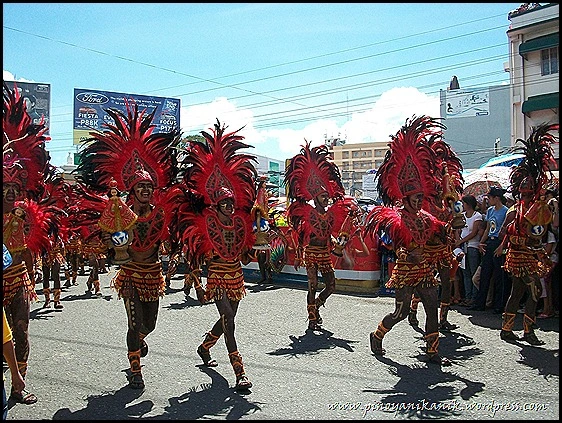
From Tribu Lun-ok
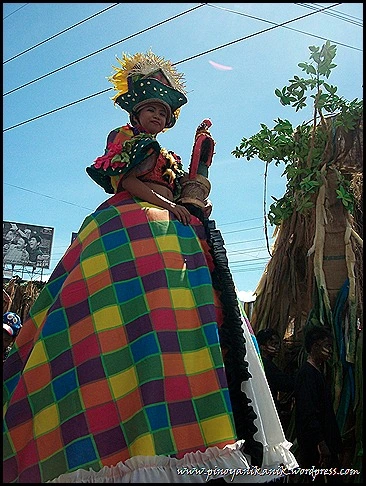
From the winning tribe – Tribu Pan-ay
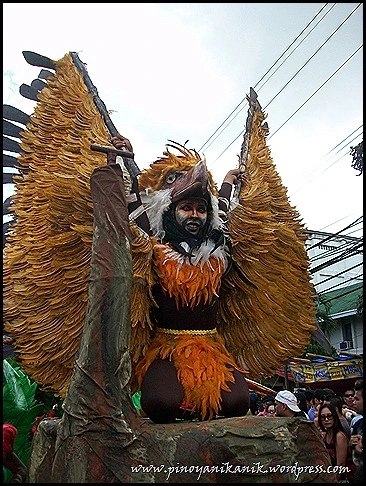
Dinagyang Festival of Iloilo is in the same subject of celebration with Kalibo Aklan’s Ati-atihan and Cebu’s Sinulog which are all about thanksgiving and a celebration in honor of Seňor Sto. Niňo (the child Jesus). They are all celebrated in January.
The government has more than a month long schedule of activities with a three day festival highlights:
Fluvial Procession
The fluvial procession is the religious highlight. It is on the Friday of the Dinagyang week. The devotees carry assorted images of the Seňor Sto. Niňo (the child Jesus) and ride in bancas from the river towards the pier where the foot parade would start and then back to the church.
Kasadyahan
The Kasadyahan (merrymaking) is the cultural highlights and is being held on the Saturday of the Dinagyang week. It is a cultural parade that depicts the culture of the early people in the province of Iloilo. It is conceptualized by the local residents and provincial government in the late 1900s. Private corporations, non-profit organizations and dance groups in Iloilo support this special celebration. The government gives special cash prices to the winners to encourage the local groups to participate.
Ati-atihan Parade and Competition
The Ati parade and competition is another cultural highlights and considered the biggest event. It is being held on the Sunday of the Dinagyang week and participated by more than ten groups of tribes. The parade is very colorful with dramatization of offerings and prayers in honor of the patron saint Sto. Niño amidst the drum beats and shouts of “Viva Señor Santo Niño” and “Hala Bira”. The performance of each tribe is spectacular with an impressive choreography, costumes and music.
Dinagyang Festival has been noted by the National Commission for the Culture and the Arts and tagged it as the “Festival of Excellent Folk Choreography”. The festival has gained national prominence and recognition by winning the national street dancing competition. It is now a vehicle to promote Iloilo as a tourist and investment destination along with its grand mansions and old churches.
The photos above are taken from the actual parade of this year’s Dinagyang Festival which I took along Bonifacio Drive (near Museo Iloilo) after each tribe performed in this place which is also the third judging area. More photos of the Dinagyang parade can be viewed from here. And street scene photos during the Kasadyahan night can be viewed from here.
Bukayo
Bukayo is a very sweet delicacy that is very popular especially for kids. It is made from young gelatinous coconut (buko) simmered in water and white or brown sugar. During the early days it is usually eaten after meal as a desert, but the younger generations eat them just like the common “junk foods”.
The jar of bukayo in this photo is taken from a “Sari Sari” store (convenience store) in the neighborhood in a province wherein you can buy it at PhP 1.00 per piece. However in the city, it is very rare to buy a bukayo per, piece they are selling it per pack. It can also be found in high end supermarkets but the price is more expensive.
Here’s one Bukayo recipe that I got from the net:
Ingredients:
- 2 coconuts
- 1 kg brown sugar
- young coconut juice (buko juice)
- all purpose flour or corn starch
- Boil together the buko juice and sugar until sugar dissolves completely and mixture thickens.
- Cook grarted coconut in a pan with a little oil until it turns slightly brown.
- Add syrup and thicken with a little flour or cornstarch diluted in water.
- Keep stirring so that syrup coats the grated coconut completely, mixture thickens and bukayo gets cooked completely.
- When cooked, transfer bukayo to a bowl.
- Form into small balls while hot.
- Use plastic wrap or wax paper to cushion your hands from the hot bukayo.
Sinulog Festival in Cebu Philippines

Facts about the Sinulog Festival in Cebu, Philippines
- It is being held annually every third Sunday of January in Cebu, Philippines to honor the patron saint Seńor Santo Nińo de Cebu (Lord Holy Child of Cebu) and the arrival of Portuguese explorer Ferdinand Magellan in the Philippines.
- Cebu is in the Central Visayas (Region VII) in the Philippines and is founded on April 27, 1565. The capital is Cebu City. Cebu has a Roman Catholic Archdiocese, and has numerous historical churches, including the Basilica Minore del Santo Niño, the Cebu Metropolitan Cathedral, the San Carlos Church, the Santo Rosario Parish Church, San José-Recoletos Church, and Sacred Heart Church as well as several other non-Catholic churches, mosques, and temples.
- Part of the tradition is a fluvial parade where the image of the Child Jesus will be leaving His home in the Basilica del Sto. Niño and will be paraded to His foster father in the St. Joseph Parish in Mandaue City. The Niño stays with His father for a day and a night. After the overnight stay with His father, He will be voyaging His way to His mother in a nearby island in Lapu-Lapu. The ceremonies in Cebu begin with this early morning fluvial procession, reenacting the coming of the Spaniards.
The Holy Child Jesus is usually kept in a glass case bedecked with blossoming flowers, which will be carried by a “galleon” towards His destination. The procession ends at the Basilica where a re-enactment of the Christianizing of Cebu is performed. - Sinulog is essentially a dance ritual which remembers the Filipino pagan past and their acceptance of Christianity. The word Sinulog comes from the Cebuano adverb “sulog” which means “like water current movement;” it describes the forward-backward movement of the Sinulog dance. The dance consists of two steps forward and one step backward, done to the sound of drums. The festival features some the country’s most colorful displays of pomp and pageantry. The participants garbed in bright-colored costumes dance to the rhythm of drums, trumpets, and native gongs.
- The event has become a tourist attraction.
The photos above are taken from the actual parade of this year’s Sinulog Festival. I took these photos along Mango Avenue in Cebu where the grand Sinulog parade is passing. I took more than 200 photos of this event and it can be viewed from here.
Suman at Halaya
Christmas Eve (Noche Buena)
New Year’s Eve (Media Noche)
Suman at Halaya is another pair of Christmas holiday food that Filipinos habitually eat together like the “Bibingka and Puto Bumbong”. The first photo is taken from our Christmas eve table (Noche Buena) while the second photo is taken from our New Year’s eve table (Media Noche). Both delicacies are sticky so Filipinos traditionally have them in their table especially during New Year’s eve because of the (funny) belief that sticky foods make the luck sticks as well. Some seriously believe this, some for fun but most have them because they are just simply delightfully good to eat.
The suman and Halaya in the first photo were bought from the local (commercial) market while the Suman and Halaya in the second photo are “home made”. “Home made” here means that I personally know who cooked the suman and halaya. The suman is from a neighbor who is known for making and selling suman in our neighborhood. while the halaya is from a friend who especially brought it from Laguna – a provincial town just outside the city.
Suman can be simply called as a “sticky rice in banana leaf”, while Halaya is an “ube jam”. Suman comes in variety but the most popular during the holiday season is the plain one. Here are some recipes of these two delicacies that I got from the net.
Suman sa Ibus (Simple Recipe)
Ingredients:
* 3 cups malagkit rice
* 2 teaspoons salt
* 2 cups thick coconut milk
Cooking Instructions
1). Soak malagkit in water for an hour or until grains are swollen. Drain.
2). Add salt and coconut milk. Mix well.
3). Prepare ibus then fill with rice mixture. Seal tubes and tie with strips of the ibus.
4). Arrange the suman in a big saucepan and cover with water. Cover the pot and
boil for 2 hours or until cooked.
How to wrap a Suman Sa Ibus:
* Fold the end of the buri leaf by 1 ½ inches.
* Fold the bottom edge into a triangle.
* Start rolling up the buri leaf in an overlapping manner.
* Roll up the buri to make a tube.
* Attach a small piece of wooden pick to secure the tube.
* Fill the tube with malagkit.
* Seal the ibus tube.
* Tie with strips of buri.
Ube Halaya Recipe
Ingredients:
- 1 kilo ube yam root
- 1 can (14 ounces) evaporated milk
- 2 cans (12 ounces) condensed milk
- 1/2 cup butter or margarine
- 1/2 teaspoon of vanilla (optional)
Cooking Instructions:
- On a pot, boil the unpeeled ube yam in water and simmer for 30 minutes. Drain and let cool.
- Peel and finely grate the ube yam.
- Heat a big wok in medium heat.
- Melt butter or margarine, add the condensed milk and vanilla flavoring. Mix well.
- Add the 1 kilo grated ube yam,
- Adjust the heat to low
- Keep on mixing the ingredients for about 30 minutes or until sticky and a bit dry (but still moist).
- Add the evaporated milk and continue to mix for another 15 minutes.
- Let cool and place on a large platter.
- Refrigerate before serving the halayang ube.
Cooking Tips:
- You may spread additional butter or margarine on top of the jam before serving.
- For the sweet toothed, sprinkle a little sugar on top of the jam after placing on the large platter.
- Instead of manually grating the ube, you may cut it in cubes and use a blender to powderized the ube.
METHOD #2
Ingredients:
- 1 kilo ube, boiled and grated
- 2 cups coconut milk
- 2 cups evaporated milk
- 1 ¼ cups sugar
- butter for greasing
Directions:
- In a thick-bottomed pan, combine grated ube, coconut milk, evaporated milk and sugar.
- Cook over medium fire until very thick.
- Stir constantly to prevent sticking.
- Mold in greased pans. Cool.
METHOD #3
- Prepare 3 cups of mashed ubi, or powdered ubi mixed with water.
- Blend this together with one cup of evaporated milk, 1 tablespoon of margarine, 1/2 cup of wheat flour and 2 cups of sugar.
- Cook over low heat, and stir constantly for 25 minutes.
- Before removing from heat, add lemon rind.
- Place in a small bottles and seal tightly. Only a couple of hundred pesos worth of ingredients are needed to produced six small bottles of marketable halaya.
Rizal Day
The “piso-inspired” medal in this photo is a finisher’s medal distributed by Greentennial Run during the running event Run Rizal held on September 18, 2011. The run is a tribute and in commemoration of the 150th birth anniversary of Philippine’s National Hero Dr. Jose P. Rizal (June 19, 1861).
The photo below is the actual Philippine One Peso Coin (PhP 1.00) with the bust image of Dr. Jose Rizal.
December 30 is a national holiday in the Philippines called Rizal Day commemorating the day of execution of Dr. Jose Rizal at Bagumbayan (now Rizal Park) in 1896.
More information about the life of Dr. Jose Rizal here and Rizal Day here. Below is the text of the poem “Mi Ultimo Adios” (My Final Farewell), written by Dr. Jose Rizal in Fort Santiago on the eve of his execution on December 30, 1896.
Mi Ultimo Adiós
Adios, Patria adorada, region del sol querida,
Perla del Mar de Oriente, nuestro perdido Eden!
A darte voy alegre la triste mustia vida,
Y fuera más brillante más fresca, más florida,
Tambien por tí la diera, la diera por tu bien.En campos de batalla, luchando con delirio
Otros te dan sus vidas sin dudas, sin pesar;
El sitio nada importa, ciprés, laurel ó lirio,
Cadalso ó campo abierto, combate ó cruel martirio,
Lo mismo es si lo piden la patria y el hogar.Yo muero cuando veo que el cielo se colora
Y al fin anuncia el día trás lóbrego capuz;
Si grana necesitas para teñir tu aurora,
Vierte la sangre mía, derrámala en buen hora
Y dórela un reflejo de su naciente luz.Mis sueños cuando apenas muchacho adolescente,
Mis sueños cuando joven ya lleno de vigor,
Fueron el verte un día, joya del mar de oriente
Secos los negros ojos, alta la tersa frente,
Sin ceño, sin arrugas, sin manchas de rubor.Ensueño de mi vida, mi ardiente vivo anhelo,
Salud te grita el alma que pronto va á partir!
Salud! ah que es hermoso caer por darte vuelo,
Morir por darte vida, morir bajo tu cielo,
Y en tu encantada tierra la eternidad dormir.Si sobre mi sepulcro vieres brotar un dia
Entre la espesa yerba sencilla, humilde flor,
Acércala a tus labios y besa al alma mía,
Y sienta yo en mi frente bajo la tumba fría
De tu ternura el soplo, de tu hálito el calor.Deja á la luna verme con luz tranquila y suave;
Deja que el alba envíe su resplandor fugaz,
Deja gemir al viento con su murmullo grave,
Y si desciende y posa sobre mi cruz un ave
Deja que el ave entone su cantico de paz.Deja que el sol ardiendo las lluvias evapore
Y al cielo tornen puras con mi clamor en pos,
Deja que un sér amigo mi fin temprano llore
Y en las serenas tardes cuando por mi alguien ore
Ora tambien, Oh Patria, por mi descanso á Dios!Ora por todos cuantos murieron sin ventura,
Por cuantos padecieron tormentos sin igual,
Por nuestras pobres madres que gimen su amargura;
Por huérfanos y viudas, por presos en tortura
Y ora por tí que veas tu redencion final.Y cuando en noche oscura se envuelva el cementerio
Y solos sólo muertos queden velando allí,
No turbes su reposo, no turbes el misterio
Tal vez acordes oigas de citara ó salterio,
Soy yo, querida Patria, yo que te canto á ti.Y cuando ya mi tumba de todos olvidada
No tenga cruz ni piedra que marquen su lugar,
Deja que la are el hombre, la esparza con la azada,
Y mis cenizas antes que vuelvan á la nada,
El polvo de tu alfombra que vayan á formar.Entonces nada importa me pongas en olvido,
Tu atmósfera, tu espacio, tus valles cruzaré,
Vibrante y limpia nota seré para tu oido,
Aroma, luz, colores, rumor, canto, gemido
Constante repitiendo la esencia de mi fé.Mi Patria idolatrada, dolor de mis dolores,
Querida Filipinas, oye el postrer adios.
Ahi te dejo todo, mis padres, mis amores.
Voy donde no hay esclavos, verdugos ni opresores,
Donde la fé no mata, donde el que reyna es Dios.Adios, padres y hermanos, trozos del alma mía,
Amigos de la infancia en el perdido hogar,
Dad gracias que descanso del fatigoso día;
Adios, dulce extrangera, mi amiga, mi alegria,
Adios, queridos séres morir es descansar.
Puto Bumbong
Puto bumbong derives from the words “puto” (steamed glutinous rice) and “bumbong” (bamboo canon or cylinder).
Puto Bumbong like Bibingka is a traditional Christmas food usually being sold outside of churches during the Christmas season after Simbang Gabi. (Misa de Gallo / Dawn Mass) and Pinoys habitually eat these two rice cakes together.
Puto Bumbong looks quite unique than the other Philippine Rice cakes because of its purple color and its thin long shape. The shape is the result from the process of cooking it from the bamboo tube where it is named after, while the color comes from the violet rice called “pirurutong”. It is served with margarine, sugar and grated coconut and like bibingka, it is served hot.
The lansungan or a specially made steamer is constructed with two protruding tubes on a kettle like shaped steamer. The tubes are for holding the bamboo tubes filled with the puto bumbong mixture in order for the steam to pass through
It takes only seconds for the puto bumbong to cook and the speed at which it is done is almost as fascinating as the taste.
Here’s one “How to Make Puto Bumbong” that I got from a Filipino Recipe page from the web.
Ingredients:
- 1 cup glutinous rice
- 2 tsp purple food color (ube)
- 2 cups water
- panutsa (sugar cane sweet) or mascuvado (raw sugar)
Utensils:
- knife
- muslin cloth
- sifter or strainer
- 2 pcs bamboo tube (bumbong)
- steamer for making puto
Puto Bumbong Cooking Instructions:
-
Soak glutinous rice in water overnight.
-
Grind the soaked rice.
-
Mix food color while the glutinous rice is being ground.
-
Wrap the ground glutinous rice on a piece of muslin cloth and place it in a strainer to drain excess liquid. Another technique in draining excess liquid is by pressing a heavy object that has been placed over the muslin cloth.
-
Once the ground rice has slightly dried, rub it against the screen of a strainer to produce coarse grained rice flour.
-
The rice flour for making puto bumbong is now ready to cook.
-
Fill each bamboo tube (bumbong) with just enough glutinous rice and put them into the steamer. See to it that the steamer contains boiling water.
-
Steam rice flour in the bamboo tubes for 10 minutes.
-
Once cooked, shake out the contents of each bamboo tube or remove the cooked glutinous rice from the bumbong with the help of a knife.
-
Spread butter on the puto bumbong and place a small piece of panutsa (sugar cane sweets) or 1 tbsp. of mascuvado (raw Sugar)
-
Add a small amount of grated coconut before serving.

